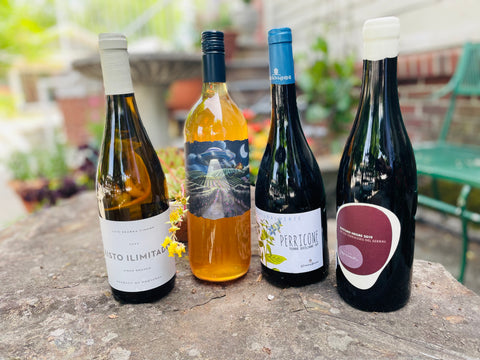
Hi, all! My name is Kendell, and I’m the newly minted GM of Hop City at KSM. I've been a Jill of all trades in beer and brewing since 2012. No matter whether I'm behind a bar, in front of a microscope, or on a brew deck, my greatest passion and pleasure is beer education. Igniting curiosity about the chemistry, biology, engineering, sociology, psychology, etc. that underlie the creation and enjoyment of my favorite beverage of moderation is my professional raison d'être.
I often begin my Beer 101 sessions with an orientation to the four core beer ingredients: water, malt, hops, and yeast, so why not kick off my introduction to the Hop City fanbase with something similar? I'll spotlight four products currently on our shelves and in our coolers that exemplify the contributions of each element.
WATER
For comprising 90% of most beers, it is a woefully underappreciated component. H2O is not just a neutral carrier substance! Starting with the right water is critical to achieving your flavor, mouthfeel, and aroma goals. It should be not just free of adulterants like chlorine but also loaded up with the right ions. Present-day brewers almost always include salts like calcium chloride and calcium sulfate in their recipes to help their municipal water supply meet the targets of whichever style they're emulating.
Irish dry stout - like The Veil's Yearn ($17.99/4pk) - is an example of a beer style whose city of origin's water chemistry drove recipe development. Pre-modern brewers realized that when starting with very alkaline water, including a large proportion of darkly kilned grains - which are quite acidic - was an excellent way to bring the final product into balance.
MALT
The all-important source of carbohydrates! In addition to providing starches and sugars, however, malted barley also provides proteins for body and melanoidins for color. Much like beer itself, malt comes in a straw-to-pitch-black rainbow of varieties. The depth of color is determined by the intensity and time of thermal processing.
Pilsner malt is often 100% of the grain bill of (you guessed it) Pilsners. It is one of the most minimally heated and therefore palest base malts available. Different suppliers of this key ingredient offer products that vary slightly in terms of how robustly grainy they present in the final beer, but generally, Pilsners (the beer) owe their soft sweetness, their oyster cracker-like flavor, and their subtly corn-like aromas to their base malt.
Birding, a collaboration between Fast Fashion and Human Robot ($16.99/4pk), is just one such beer.

HOPS
If you did an impromptu vox pop in Krog Street Market and asked folks to name one ingredient of beer, I'd bet good money the most frequent response would be "hops." Hops provide bitterness to balance the sweetness of the malt and, most charmingly for those of us who have been bitten by the bine, all those lovely herbal, floral, piney, citrusy, mango-y, gooseberry-y flavors and aromas we love in hop-forward beers.
Hops can be added at several points during the brewing and fermentation process, but when they are added after the wort/beer has been cooled post-boil, this is what is known as "dry hopping." Dry hopping is a way for a brewer to best harness the aromatic essential oils of the hops without adding much - or any - additional bitterness.
A presently-trendy spin on the German-style Pilsner is the Italian-style Pilsner. The quick and dirty difference? Dry hopping is employed in the latter. A phenomenal example of this style is the herbaceous and melon-y Bright ($15.99/4pk) by our friends in Asheville, Burial. ("Another Pilsner?" you balk. What can I say? I'm a lager girl. And IPAs need no hype person.)
YEAST
As a former microbe wrangler, my heart belongs to this workhorse of the cellar. Brewers make wort; yeast turns wort into beer. Different yeast strains vary wildly in how many and what kind of fermentation byproducts they impart to the finished beer. Complicating the picture further is the fact that temperature, carbohydrate and amino acid profile, pH, micronutrient availability, and a laundry list of other factors can make the same yeast behave totally differently in two different beers.
Most beers are fermented by some strain of Saccharomyces, but occasionally brewers intentionally invite an "eccentric uncle" to the party, Brettanomyces. Much like Saccharomyces, different strains of Brett, as it is affectionately referred to, provide different flavors and aroma, from cherry pie to pineapple to "petting zoo." Orval ($6.99/btl), from revered Trappist producer Abbaye Notre-Dame d’Orval, is a fascinating example of a Brett-influenced beer. Young Orval, as it is also a dry-hopped beer, is dominated by those floral notes, but as it bottle conditions (ages in the presence of the yeast contained within), it takes on pleasant funky, horse-blanket aromas and a whip-crack dryness.



